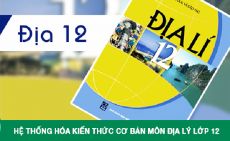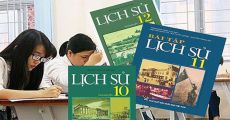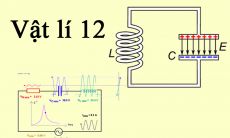Đề thi thử THPT QG năm 2022 môn Tiếng Anh
Trường THPT Kim Liên
-
Mark the letter A, B, C, or D on your answer sheet to indicate the word(s) OPPOSITE in meaning to the underlined word(s) in each of the following questions
Câu 1:
Choose the word(s) OPPOSITE in meaning to the underlined word(s): I can't write that kind of letter unless I'm in the right frame of mind.
A. high spirits
B. low spirits
C. good mood
D. bad mood
-
Câu 2:
Choose the word(s) OPPOSITE in meaning to the underlined word(s): Tom was not popular with younger colleagues because he adopted a rather patronizing attitude towards them.
A. respectful
B. disapproving
C. friendly
D. defiant
-
Mark the letter A, B, C or D on your answer sheet to indicate the correct answer to each of the following questions
Câu 3:
She managed to express her thoughts to the interviewer _______ her poor English.
A. in spite of
B. though
C. because
D. because of
-
Câu 4:
She never wants to become his wife. I'm sure she will _______ him _______ if he asks her to marry him.
A. turn-down
B. give – up
C. put – down
D. put – up
-
Câu 5:
Since the beginning of April, Sam Son Flower Festival has attracted thousands of _______ to the beach.
A. customers
B. visitors
C. clients
D. guests
-
Câu 6:
As many as 49.743 people in 19 provinces and cities across Vietnam _______ against COVID - 19 in March.
A. vaccinated
B. were vaccinating
C. were vaccinated
D. vaccinate
-
Câu 7:
The faster we walk, _______ we will get there.
A. the soon
B. the sooner
C. the soonest
D. the more soon
-
Câu 8:
This is a picture of a/an _______ castle.
A. white Egypt ancient
B. ancient white Egypt
C. Egypt ancient white
D. Egypt white ancient
-
Câu 9:
_______ all the exercises, she went to bed.
A. To do
B. Having done
C. Being done
D. Had done
-
Câu 10:
The students are excited _______ the coming summer holiday.
A. for
B. with
C. to
D. about
-
Câu 11:
The injury _______ her compliments on her excellent knowledge of the subject.
A. gave
B. said
C. made
D. paid
-
Câu 12:
She completed the remaining work at her office in great _______ so as not to miss the last bus to her home.
A. hurry
B. haste
C. rush
D. speed
-
Câu 13:
I can't go out this morning. I'm up to my _______ in reports.
A. nose
B. ears
C. lips
D. eye
-
Câu 14:
On April 10th, the advertisement for Vinfast VF-e36 model car on CNN instantly caught _______ of TV viewers and netizens worldwide.
A. attends
B. attention
C. attentive
D. attentively
-
Câu 15:
When I went out, the sun _______.
A. was shining
B. is shining
C. shines
D. shone
-
Câu 16:
She's beautiful, _______?
A. isn't she
B. doesn't she
C. didn't she
D. won't she
-
Câu 17:
The secretary will have finished the preparations for the meeting _______.
A. by the time the boss arrives
B. after the boss had arrived
C. as soon as the boss had arrived
D. when the boss arrived
-
Mark the letter A, B, C or D on your answer sheet to indicate the word whose underlined part differs from the other three in pronunciation in each of the following questions
Câu 18:
Choose the word whose underlined part differs from the other three in pronunciation: noticed, finished, supported, approached
A. noticed
B. finished
C. supported
D. approached
-
Câu 19:
Choose the word whose underlined part differs from the other three in pronunciation: stone, zone, phone, none
A. stone
B. zone
C. phone
D. none
-
Mark the letter A, B, C or D on your answer sheet to indicate the word that differs from the other three in the position of primary stress in each of the following questions
Câu 20:
Choose the word that differs from the other three in the position of primary stress: relax, enter, behave, allow
A. relax
B. enter
C. behave
D. allow
-
Câu 21:
Choose the word that differs from the other three in the position of primary stress: altitude, stimulate, company, decision
A. altitude
B. stimulate
C. company
D. decision
-
Mark the letter A, B, C, or D on your answer sheet to indicate the word(s) CLOSEST in meaning to the underlined word(s) in each of the following questions
Câu 22:
Choose the word(s) CLOSEST in meaning to the underlined word(s): Children brought up in a caring environment tend to grow more sympathetic towards others.
A. loving
B. dishonest
C. healthy
D. hateful
-
Câu 23:
Choose the word(s) CLOSEST in meaning to the underlined word(s): A series of programs have been broadcast to raise public awareness of healthy living.
A. assistance
B. confidence
C. understanding
D. experience
-
Mark the letter A, B, C or D on your answer sheet to indicate the option that best completes each of the following exchanges
Câu 24:
Ted and Kate are talking about the school curriculum.
- Ted: "Swimming should be made part of the school curriculum."
- Kate: “_________. It is an essential life skill."
A. I can't agree with you more
B. Oh, that's a problem
C. You can make it
D. Not at all
-
Câu 25:
Tom is talking to John, his new classmate, in the classroom.
- Tom: "How did you get here?”
- John: “__________________
A. I came here by train
B. Is it far from here?
C. The train is so crowded
D. I came here last night
-
Read the following passage and mark the letter A, B, C or D on your answer sheet to indicate the correct word or phrase that best fits each of the numbered blanks from 26 to 30
Imaginary friends in early childhood
Many children have an imaginary friend – that is a friend they have invented. It was once thought that only children (26) _______ had difficulty in creating relationships with others had imaginary friends. In fact, having an imaginary friend is probably a common aspect of a normal childhood (27) _______ many children with lots of real friends also have an imaginary friend. The imaginary friend may help some children cope with emotional difficulties, but for (28) _______, having an imaginary friend is just fun.
There is no firm evidence to say that having an imaginary friend (29) _______ us anything about what a child will be like in the future. One (30) _______ of research, though, has suggested that adults who once had imaginary friends may be more creative than those who did not.
Câu 26:
(26) ________
A. whom
B. who
C. whose
D. which
-
Câu 27:
(27) ________
A. so
B. as
C. although
D. but
-
Câu 28:
(28) ________
A. many
B. much
C. another
D. every
-
Câu 29:
(29) ________
A. advises
B. informs
C. tells
D. reveals
-
Câu 30:
(30) ________
A. piece
B. unit
C. item
D. section
-
Mark the letter A, B, C or D on your answer sheet to indicate the sentence that best combines each pair of sentences in the following questions
Câu 31:
Lan had some shocking words on her facebook. Then, everyone knew her.
A. Hardly when Lan had some shocking words on her facebook everyone knew her.
B. Only after Lan had some shocking words on her facebook everyone knew her.
C. Only when Lan had some shocking words on her facebook did everyone know her.
D. Until Lan had some shocking words on her facebook did everyone knew her.
-
Câu 32:
My brother is away on business. I really need his help now.
A. As long as my brother is at home, he will be able to help me.
B. If only my brother had been at home and could have helped me.
C. If my brother is at home, he can help me now.
D. I wish my brother were at home and could help me now.
-
Read the following passage and mark the letter A, B, C or D on your answer sheet to indicate the correct answer to each of the questions from 33 to 39
How do children learn about wildlife? And is what they learn the sort of thing they should be learning? It is my belief that children should not just be acquiring knowledge of animals but also developing attitudes and feelings towards them based on exposure to the real lives of animals in their natural habitats. But is this happening?
Some research in this area indicates that it is not. Learning about animals in school is often completely disconnected from the real lives of real animals, with the result that children often end up with little or no understanding or lasting knowledge of them. They learn factual information about animals, aimed at enabling them to identify them and have various abstract ideas about them, but that is the extent of their learning. Children's storybooks tend to personify animals as characters rather than teach about them.
For direct contact with wild and international animals, the only opportunity most children have is visiting a zoo. The educational benefit of this for children is often given as the main reason for doing it but research has shown that zoo visits seldom add to children's knowledge of animals – the animals are simply like exhibits in a museum that the children look at without engaging with them as living creatures. Children who belong to wildlife or environmental organizations or who watch wildlife TV programmes, however, show significantly higher knowledge than any other group of children studied in research. The studies show that if children learn about animals in their natural habitats, particularly through wildlife-based activities, they know more about them than they do as a result of visiting zoos or learning about them in the classroom.
Research has also been done into the attitudes of children towards animals. It shows that in general terms, children form strong attachments to individual animals, usually their pets, but do not have strong feelings for animals in general. This attitude is the norm regardless of the amount or kind of learning about animals they have at school. However, those children who watch television wildlife programmes show an interest in and affection for wildlife in its natural environment, and their regard for animals in general is higher.
Câu 33:
What could be the best title for the passage?
A. Zoos: The Best Opportunity to Learn About Animals
B. Methods of Learning About Animals at School
C. Learning About Animals at School
D. Research on Learning About Animals
-
Câu 34:
The word “disconnected” in paragraph 2 is closest in meaning to ______.
A. separated
B. removed
C. divided
D. disagreed
-
Câu 35:
What opinion does the writer express in the second paragraph?
A. What children learn about animals at school is often inaccurate.
B. The amount of acquired knowledge about animals at school is adequate.
C. Children's storybooks are an effective way of teaching them about animals.
D. Children's learning about animals at school has the wrong emphasis.
-
Câu 36:
The word “them” in paragraph 2 refers to ______
A. ideas
B. children's storybooks
C. children
D. animals
-
Câu 37:
Which of the following is NOT true according to the passage?
A. Children's storybooks give factual information about animals
B. The writer raises the issue of the outcome of what children learn about animals
C. Learning about animals in their natural habitats teaches children more about animals than other methods
D. Zoo visits have less educational benefit than they are believed to have
-
Câu 38:
It can be inferred from paragraph 4 that children's attitudes to animals ______
A. depend on whether or not they have pets
B. differ from what adults might expect them to be
C. based on how much they know about the animals
D. are not affected by what they learn about them at school
-
Câu 39:
The word “regard” in paragraph 4 is closest in meaning to______.
A. opinion
B. respect
C. attitude
D. sympathy
-
Mark the letter A, B, C or D on your answer sheet to indicate the underlined part that needs correction in each of the following questions
Câu 40:
Find the mistake: A Tokyo newspaper - television company has organized the climb in 1975.
A. Tokyo
B. company
C. has organized
D. in
-
Câu 41:
Find the mistake: I felt annoyed by his continuous interruptions at the meeting this morning.
A. annoyed
B. continuous
C. interruptions
D. at
-
Câu 42:
Find the mistake: Ordinary Americans are friendly and not afraid to show its feelings.
A. Ordinary
B. are
C. not
D. its
-
Read the following passage and mark the letter A, B, C or D on your answer sheet to indicate the correct answer to each of the questions from 43 to 47
Charles Lutwidge Dodgson is perhaps not a name that is universally recognized, but Dodgson did achieve enormous success under the pseudonym Lewis Carroll. He created this pseudonym from the Latinization, Carolus Ludovicus, of his real given name. It was under the name Lewis Carroll that Dodgson published the children's books Alice's Adventures in Wonderland (1865) and its sequel Through the Looking Glass (1872). Though Dodgson achieved this success in children's literature, he was not an author of children's books by training or profession. His education and chosen field of pursuit were far removed from the field of children's literature and were instead focused on theoretical mathematics.
Dodgson graduated with honors from Christ Church, Oxford, in 1854 and then embarked on a career in the world of academia. He worked as a lecturer in mathematics at Oxford and, later in his career, published a number of theoretical works on mathematics under his own name rather than under the pseudonym that he used for his children's stories. He produced a number of texts for students, such as A Syllabus of Plane Algebraical Geometry (1860), Formulae of Plane Trigonometry (1861), which was notable for the creativity of the symbols that he used to express trigonometric functions such as sine and cosine, and A Guide for the Mathematical Student (1866). In a number of more esoteric works, he championed the principles of Euclid; in Euclid and his Modern Rivals (1879), he presented his ideas on the superiority of Euclid over rival mathematicians in a highly imaginative fashion, by devising, a courtroom trial of anti-Euclid mathematicians that he named "Euclid-wreakers" and ultimately finding the defendants guilty as charged. Curiosa Mathematica (1888-1893) made a further defense of Euclid's work, focusing on Euclid's definition of parallel lines. These academic works never had the universal impact of Dodgson's works for children using the name Lewis Carroll, but they demonstrate a solid body of well-regarded academic material.
Câu 43:
The word "pseudonym" in paragraph 1 is closest in meaning to ______
A. real name
B. family name
C. pen pal
D. pen name
-
Câu 44:
The word "they" in paragraph 2 refers to ______.
A. Dogson's works for children
B. children
C. these academic works
D. parallel lines
-
Câu 45:
What could be the best title for the passage?
A. The Works of Lewis Carroll
B. Dodgson and Carroll: Mathematics and Children's Stories
C. Charles Dodgson and Euclid
D. The Story of Alice's Adventures in Wonderland
-
Câu 46:
According to the passage, Dodgson ______
A. used the same name on all his published works
B. used a pseudonym for the work about courtroom trial
C. did not use his given name on his stories for children
D. used the name Caroll on his mathematic works
-
Câu 47:
Which of the following is NOT TRUE, according to the passage?
A. Dodgon was an outstanding student
B. Dodgon attended Christ Church, Oxford.
C. Dodgon was a published author of academic works
D. Dodgon studied children's literature
-
Mark the letter A, B, C or D on your answer sheet to indicate the sentence that is closest in meaning to each of the following questions
Câu 48:
“Would you like to go to the cinema with me?” Jane said to Mary.
A. Jane encouraged Mary to go to the cinema with her.
B. Jane reminded Mary to go to the cinema with her.
C. Jane invited Mary to go to the cinema with her.
D. Jane persuaded Mary to go to the cinema with her.
-
Câu 49:
They last saw each other six months ago.
A. They haven't seen each other for six months.
B. They haven't seen each other since six months.
C. They have seen each other for six months.
D. They didn't see each other six months ago.
-
Câu 50:
I'm sure Luisa was very disappointed when she failed the exam.
A. Luisa could have been very disappointed when she failed the exam.
B. Luisa may be very disappointed when she failed the exam.
C. Luisa might be very disappointed when she failed the exam.
D. Luisa must have been very disappointed when she failed the exam.














